Review: HTC One for Windows
Screen
The One for Windows has a 5-inch LCD screen with 1920 x 1080 pixels. It is protected by Gorilla Glass. It's a great display. Text and graphics look razor sharp, colors are brilliant, and it's very bright. You'll have no trouble using the One indoors and out, thanks to the dazzlingly bright screen. Viewing angles are excellent; I didn't see any color shift or brightness drop-off when I tilted the One. Bottom line: the One for Windows has a great screen.
Signal
The One performed almost flawlessly on Verizon's LTE 4G network. It remained connected to 4G throughout my time testing it and never dropped to 3G. I was able to connect all calls on the first attempt, in both weak and strong coverage areas. The phone did manage to drop one call when in a fast-moving car. Data speeds were nice and quick, though they slowed just a wee bit in weak coverage. In all, though, the signal performance is top-notch.
Sound
The One for Windows performed way above average as far as call quality is concerned. Voices in the earpiece sounded clean and bright. The earpiece produced plenty of volume. You can set it at 60% or 70% most of the time. I only needed to crank it all the way up in the noisiest spaces, and was still able to hear calls above the din of NYC, as well as chatty coffee shop-goers. The people I spoke to through the One said I sounded very good. The speakerphone is just as good as the earpiece. Voices were loud and clear coming through the BoomSound speakers. They can easily overpower the noise in your home or office, and perhaps even most cars. The ringers and alerts are incredibly loud. You'll have no trouble hearing the phone ring even when several rooms away. The vibrate alert is OK, but not great.
Battery
Like the One for Android, the One for Windows Phone is a battery champ. The phone provided enough power to get through about a day and a half with what I'd define as normal use. I used multiple email accounts, browsed social networks, surfed the web, and streamed some Pandora. I had the Bluetooth and Wi-Fi radios on at all times, and used GPS for navigation. You shouldn't have any trouble getting at least a day out of it.
The One for Windows does not have the great HTC-made battery saving tools found on the One for Android. Instead, it includes the Windows Phone Battery Saver. You can use the Battery Saver to shut off select apps once the battery reaches a predetermined level. For example, when enabled you can control which apps continue to run in the background, or have access to the data radio. I didn't need to use it while testing the One.


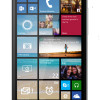 Hands-On: HTC One for Windows Phone
Hands-On: HTC One for Windows Phone
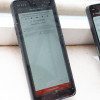 Qualcomm vs. Bullitt: Satellite Connectivity Comparison and Hands On
Qualcomm vs. Bullitt: Satellite Connectivity Comparison and Hands On
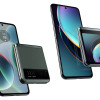 Motorola Gets Serious About Foldables with New RAZR Lineup
Motorola Gets Serious About Foldables with New RAZR Lineup
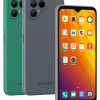 Fairphone 4 Comes to the US
Fairphone 4 Comes to the US
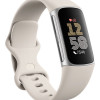 Google's New Fitbit Blurs the Line Between Tracker and Smartwatch
Google's New Fitbit Blurs the Line Between Tracker and Smartwatch
 HTC One (M8) for Windows (CDMA)
HTC One (M8) for Windows (CDMA)











